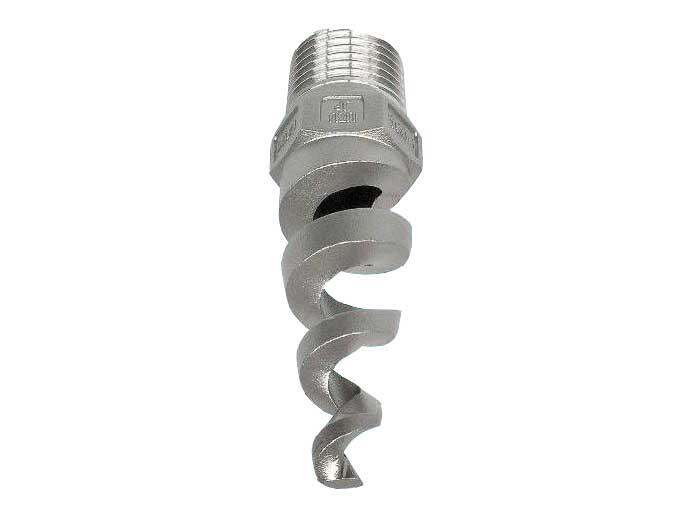Introduction
Anti-clogging nozzles play a critical role in various industries, including cooling systems, agriculture, chemical processing, and industrial cleaning. However, traditional nozzles often face clogging issues due to debris, mineral deposits, and other contaminants in the fluid. This can lead to inefficient operation, increased maintenance costs, and frequent downtime. Anti-clogging nozzles are designed to overcome these challenges by incorporating self-cleaning mechanisms, advanced flow designs, and durable materials that prevent blockages and ensure uninterrupted performance. They help in maintaining consistent fluid distribution, improving system efficiency, and reducing operational costs. Whether used in cooling towers, irrigation systems, or manufacturing plants, these nozzles are essential for industries that require precise and reliable fluid spraying. With growing demand for energy-efficient and low-maintenance solutions, anti-clogging nozzles are becoming increasingly popular. Advancements in materials, 3D printing, and IoT-enabled monitoring systems are further enhancing their efficiency and durability.
Key Factors & Benefits
Self-Cleaning Mechanism
- Anti-clogging nozzles often feature a self-cleaning system that dislodges particles obstructing the nozzle opening.
- Some models include flexible tips that expand and contract to remove debris.
- Swirl chamber designs can also prevent accumulation of contaminants, ensuring continuous operation.
Wide Spray Pattern
- Designed to provide uniform coverage, ensuring efficient distribution of water, chemicals, or cooling fluids.
- Helps in better heat dissipation in cooling towers and even application in agricultural irrigation.
- Reduces overspray and wastage, optimizing operational efficiency.
Durability
- Constructed from corrosion-resistant materials such as stainless steel, brass, and specialized polymers.
- Resistant to chemical corrosion, high temperatures, and wear, ensuring long-term reliability.
- Some nozzles incorporate ceramic or hardened alloy tips to resist abrasive materials.
Low Maintenance
- Eliminates frequent manual cleaning due to built-in anti-blocking features.
- Reduces downtime associated with nozzle clogging in industrial applications.
- Extends the operational lifespan of spray systems, lowering replacement costs.
Energy Efficiency
- Ensures optimal flow rate with minimal pressure drop, reducing pump energy consumption.
- Improves fuel efficiency in industrial cooling and chemical spray processes.
- Optimizes resource usage, leading to lower operational costs.
Improved Productivity
- Ensures consistent output without interruptions caused by clogging issues.
- Increases efficiency in industries where precise fluid distribution is critical.
- Enhances performance in applications like dust suppression, cooling, and chemical dosing.
Applications of Anti-Clogging Nozzles
Cooling Towers
- Ensures continuous water distribution without clogging due to impurities.
- Maintains heat exchange efficiency by preventing scaling and debris accumulation.
- Reduces maintenance needs and extends the life of cooling system components.
Agriculture & Irrigation
- Prevents clogging due to sand, algae, and organic debris in irrigation water.
- Ensures even water distribution, improving crop yield and soil moisture management.
- Reduces the need for filter maintenance, improving system efficiency.
Industrial Cleaning
- Used in high-pressure washing systems to maintain uninterrupted spray performance.
- Prevents blockage from detergent residues and contaminants in automated cleaning systems.
- Ideal for industries such as automobile manufacturing, food processing, and pharmaceutical sanitation.
Chemical Processing
- Used for accurate chemical dosing without blockage from crystallized or viscous fluids.
- Ensures precise atomization of chemicals in petrochemical and pharmaceutical industries.
- Prevents cross-contamination and reaction failures due to inconsistent spray patterns.
Food Processing
- Used in washdown and sanitation applications to maintain hygiene standards.
- Prevents clogging caused by food particles, oils, and sticky substances.
- Ensures uniform spraying of cleaning solutions and disinfectants.
Future Trends & Innovations
Smart Nozzles
- Integration of IoT-enabled sensors to monitor spray performance and detect clogs in real time.
- Enables remote monitoring of nozzle function, reducing the need for manual inspections.
- Can be linked with automated maintenance alerts to optimize cleaning schedules.
Advanced Materials
- Development of self-lubricating coatings that repel contaminants and reduce adhesion.
- Use of nano-coatings to prevent mineral buildup and bacterial growth.
- Incorporation of wear-resistant ceramics for increased longevity in harsh environments.
3D-Printed Nozzles
- Custom-designed nozzles with complex geometries to improve anti-clogging capabilities.
- Reduces manufacturing costs and allows for rapid prototyping of specialized nozzles.
- Offers precise customization for specific industrial applications.
Automated Cleaning Systems
- Development of nozzles with built-in auto-cleaning mechanisms triggered at set intervals.
- Some designs feature self-actuating purge systems that expel blockages automatically.
- Improves system reliability, especially in continuous operation industries.
Sustainable Solutions
- Focus on water and energy conservation through optimized spray patterns.
- Development of biodegradable and recyclable materials for eco-friendly nozzle production.
- Innovations aimed at reducing chemical usage in spray applications.
Conclusion
Anti-clogging nozzles is transforming industries by improving efficiency, reducing maintenance efforts, and ensuring continuous operation. These nozzles address common challenges like blockages, uneven fluid distribution, and system downtime, making them indispensable in applications ranging from cooling towers to precision chemical processing. As technology advances, the future of anti-clogging nozzles looks promising. Smart sensors, self-cleaning mechanisms, and sustainable designs are shaping the next generation of nozzles, making them more reliable and cost-effective. The integration of IoT and AI-driven monitoring will further enhance their efficiency, allowing real-time adjustments to optimize performance. Industries looking to improve productivity, lower operational costs, and enhance fluid distribution processes should consider investing in anti-clogging nozzles. Their ability to maintain consistent spray performance with minimal maintenance makes them a valuable addition to various industrial and commercial systems. As innovation continues, these nozzles will play an increasingly significant role in achieving sustainable and efficient fluid handling solutions.

